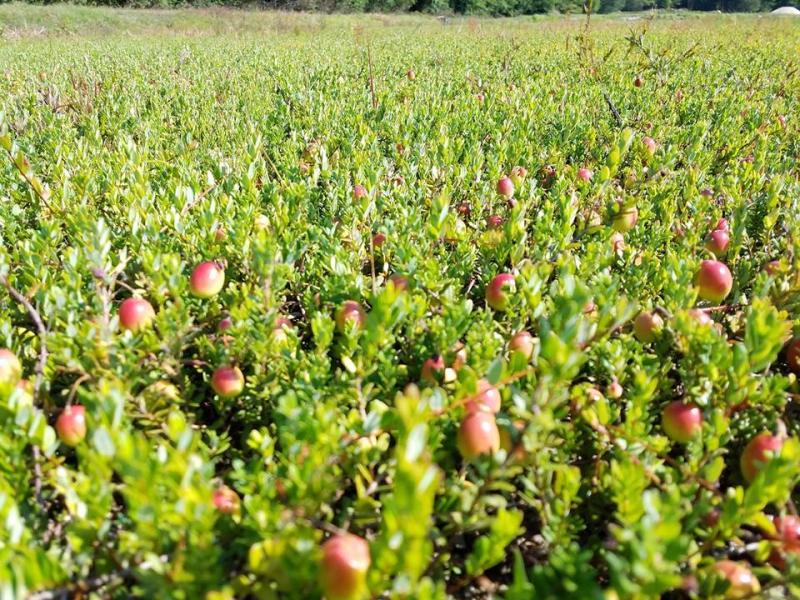Drought has cranberry growers looking to the sky
The drought has left cranberry harvest projections 12 percent lower than last year as cranberry growers pray for rain.
“We’re absolutely hoping for rain,” said Linda Burke, a spokesperson for the Wareham-based A.D. Makepeace Company.
Burke’s company is the largest cranberry growing company in the world. Last year, A.D. Makepeace harvested 412,000 barrels of cranberries. The company farms approximately 1,750 acres of bogs in Southeastern Massachusetts.
Burke said the company doesn’t project how large its crop will be year-to-year.
“You can’t count the harvest until it’s in the barn,” she says.
However, with most of Massachusetts experiencing a severe drought Burke said the company is prepared for a lower yield.
“It will be a logistical challenge,” she said, adding that A.D. Makepeace had already taken measures to mitigate the dry spell.
Bog renovations and the planting of new, hybrid cranberry strains that are drought resistant should help come harvest time in the fall, she said.
The drought is good and bad news for the Massachusetts cranberry industry, according to Brian Wick, executive director of the Cape Cod Cranberry Growers’ Association. He said the dry conditions mean that the chance of rot is low, but farmers are running out of water.
“Having no rain is not ideal. The irrigation certainly helps dramatically, but you just really can’t ever replace a good natural rainfall,” said Wick.
The United States Department of Agricultural released its estimates for the state’s cranberry harvest on Aug. 12. The projected 2.07 million barrel harvest is 282,000 less than last year. At 100 pounds a barrel, that’s about 28 million pounds less than 2015’s production.
Wick said that’s not as bad as it sounds. First of all, this year’s estimate is back to 2014 levels, and Wick said 2015 was a banner year for cranberries.
“It was the biggest crop we’ve had in Massachusetts history,” he said. “It’s rare to have back to back bumper crops.”
Secondly, Wick said the USDA estimate is too high. The U.S. Cranberry Marketing Committee estimates that the Commonwealth will produce 2.08 million barrels, a slightly higher number.
Even so, if the drought continues, the berries won’t get bigger, and that affects cranberry sales.
Consumers are accustomed to seeing large berries in the produce section, plus, sweetened dried cranberries are made from larger berries.
Additionally, growers get paid by weight, not the number of berries so smaller berries mean less income.
Adding insult to injury, Wick said many independent cranberry farmers (versus those in the Ocean Spray cooperative), are already getting paid 30 to 40 percent less than their cost of production, and he estimates it will be another four to five years before they see a profit as efforts are made to expand the demand for cranberries in countries such as India and China.
Not to throw cold water on the situation, but low to no water in the reserves could be a problem when the first frost hits. Farmers spray water over the bogs in advance of freezing temperatures to insulate berries, and they can’t do that if all the water has dried up.
Wick said there are efforts being made at the state level to help the cranberry industry, including discussions on how to use alternative energy to lower costs and how to help farmers ready to retire come up with good exit strategies. Legislation could be in the pipeline soon as well.
“It’s a multifaceted approach to keep the industry as viable as possible,” said Wick.
For now, growers are watching the skies, but Wick said he is “cautiously optimistic” that the season will not be a bust.













